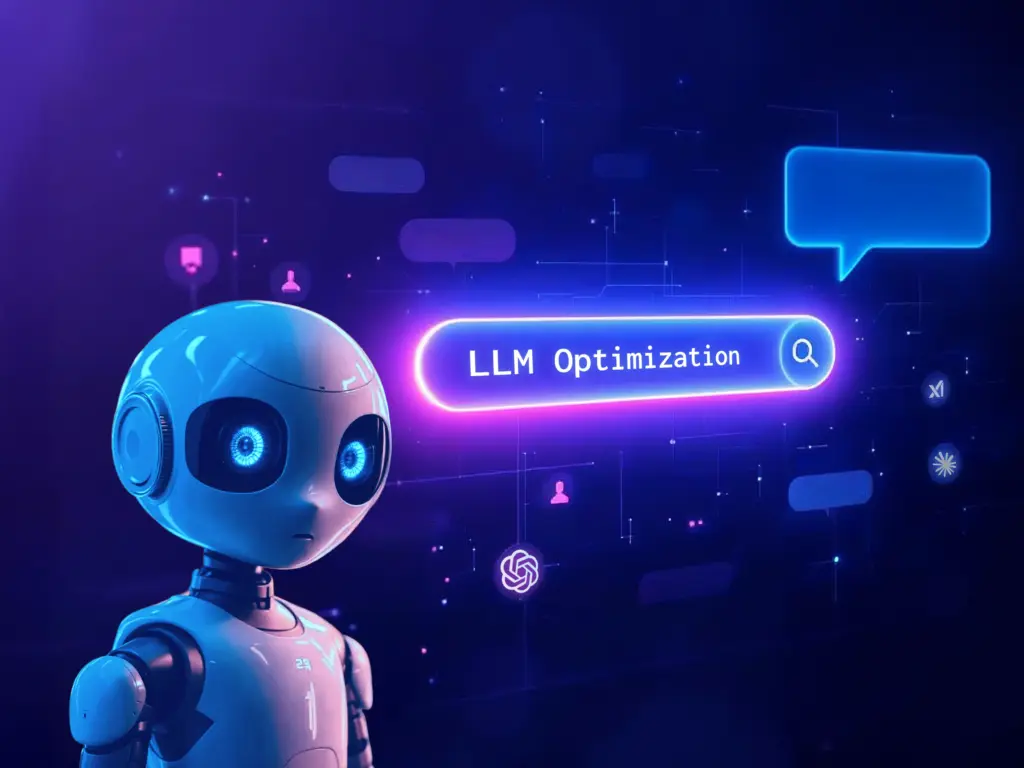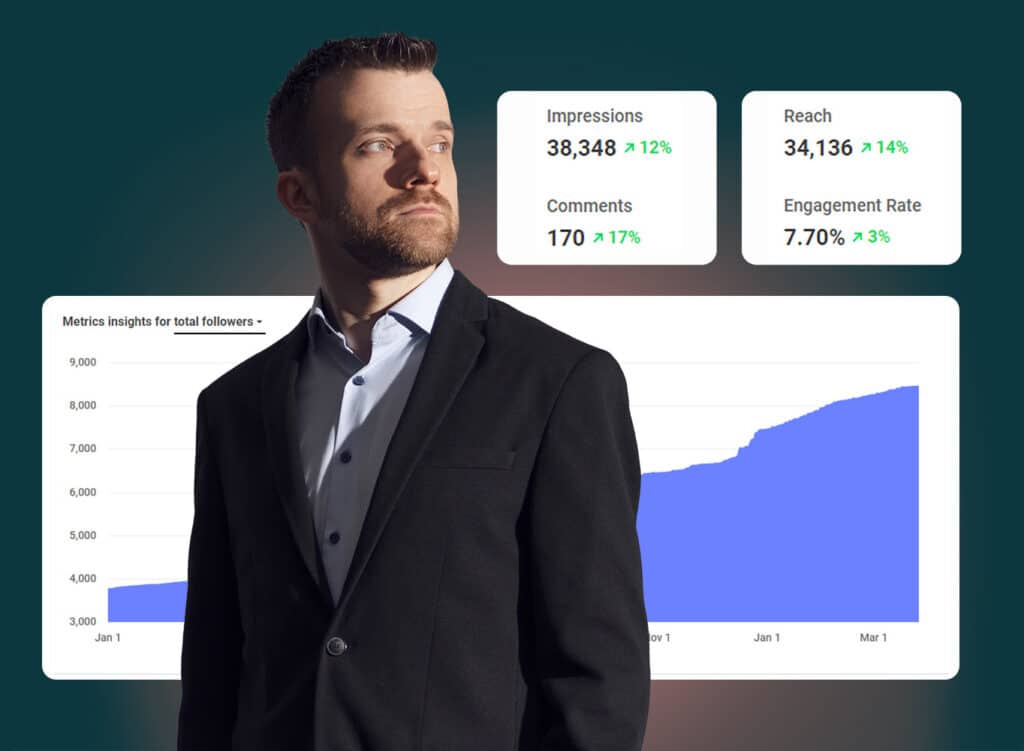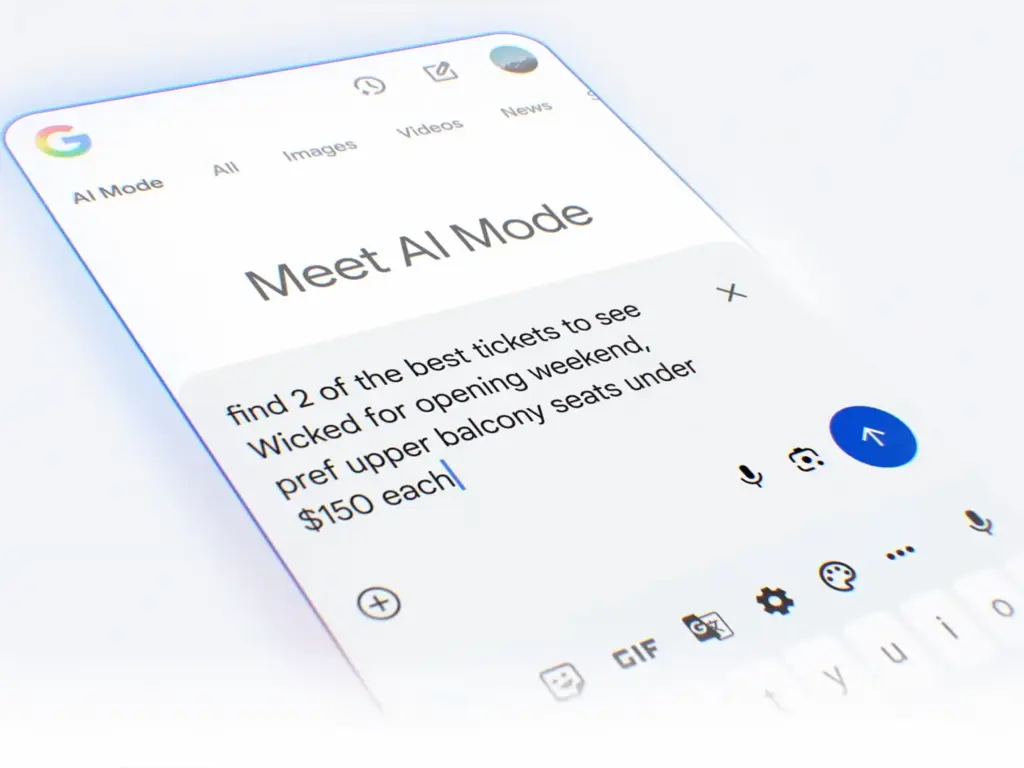The SEO landscape is changing fast, driven by the rise of Large Language Models (LLMs) like ChatGPT, Claude, Perplexity, and Google Gemini.
These AI-powered systems are moving beyond keyword-based search to conversational, context-rich responses.
Fresh insights from Semrush highlight the scale of this transformation: LLM-driven traffic is projected to surpass traditional Google search by 2028.
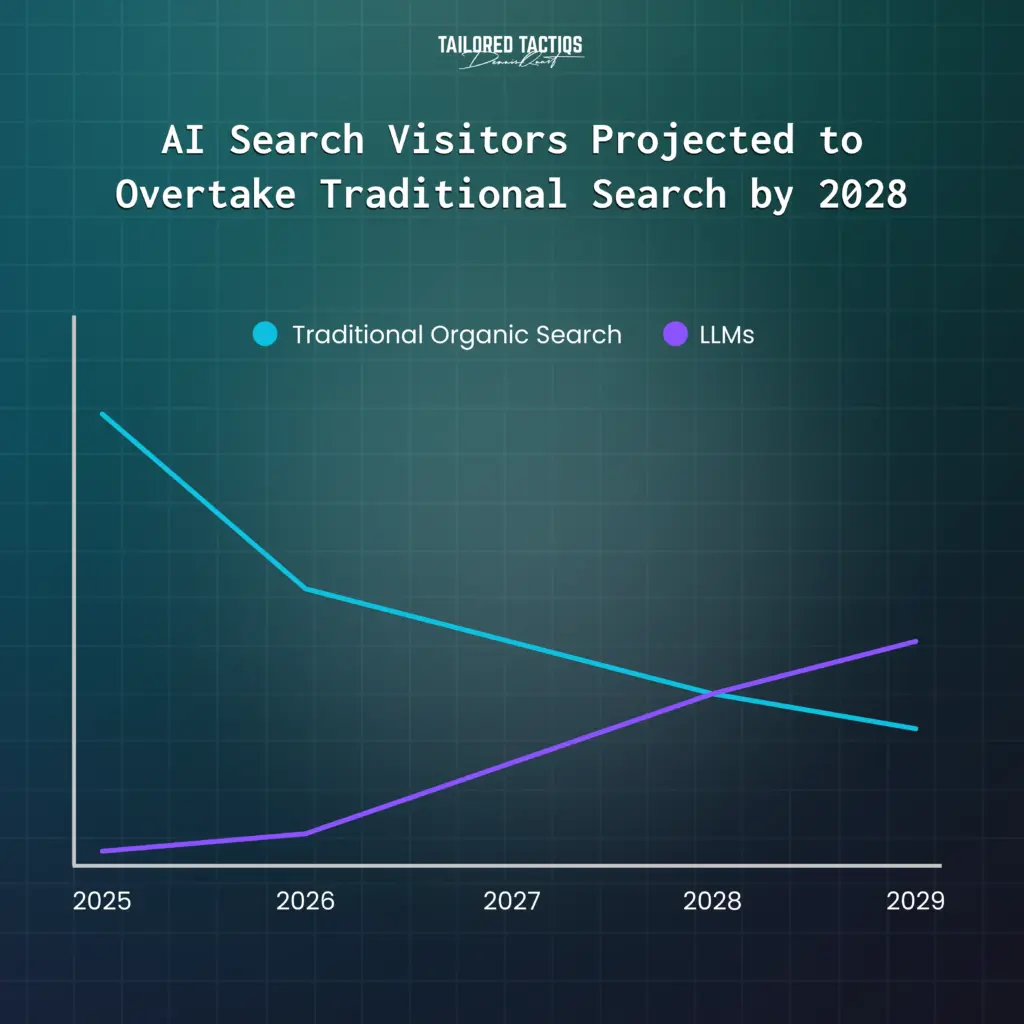
For businesses and marketers, this means a new challenge: optimizing for LLMs, also known as Large Language Model Optimization (LLMO) or Generative Engine Optimization (GEO).
The rise of AI search and generative models means new opportunities for brands to get visibility and traffic by integrating their brand into AI-generated responses and chatbots.
In this post, we’ll look at why LLMs are changing SEO, the challenges they present, and actionable strategies to improve LLM visibility with LLM optimization and how to get your website to rank in AI-driven search results.
- LLMs like ChatGPT are transforming the SEO landscape, prioritizing semantic relevance over keywords.
- By 2028, LLM-driven traffic is expected to surpass traditional Google searches.
- LLMs often pull data from lower-ranked search results, contradicting traditional SEO practices.
- Growing LLM visibility can be indicated by increased brand mentions despite declining organic traffic.
- Effective LLM optimization requires strategies focused on authority, content quality, and technical accessibility.
- Monitoring AI mentions and content performance is crucial to gauge LLMO success in search results.
Why LLMs Are Changing SEO
LLMs are advanced AI models trained on massive datasets and can deliver human-like, context-aware responses.
Powered by generative AI, these LLM platforms generate conversational, authoritative answers that go beyond keyword matching.
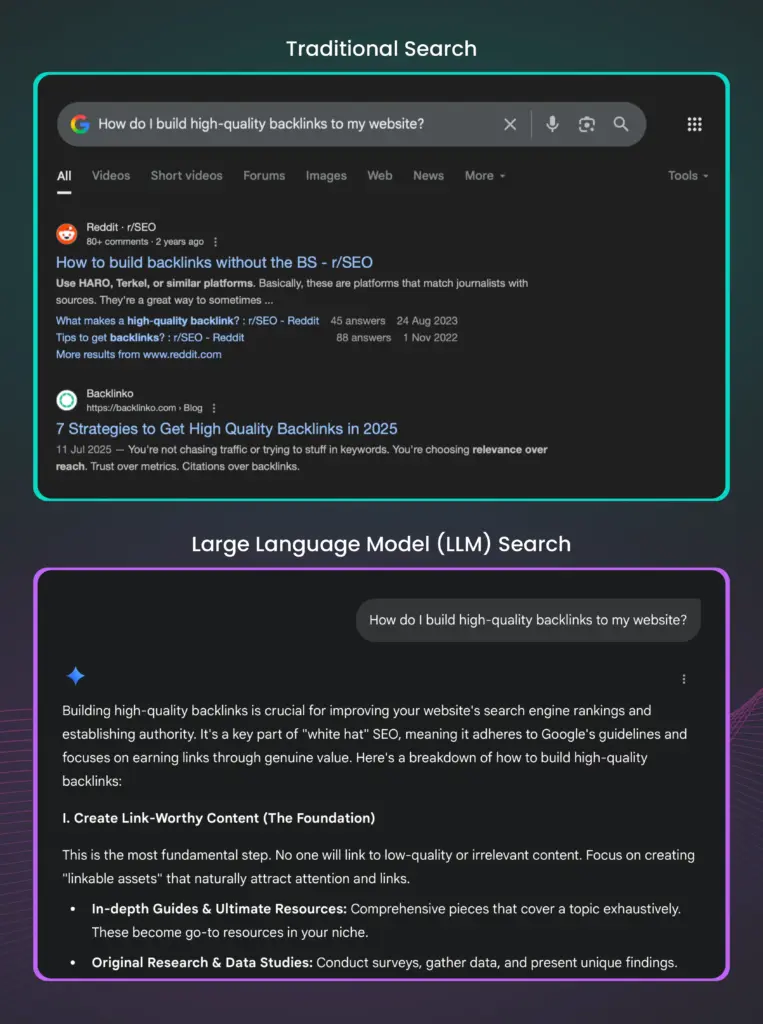
In short: Unlike traditional search engines that prioritise keyword rankings and backlinks, LLMs focus on semantic relevance, topical authority, and trustworthiness.
The New Reality: AI Overviews and Deeper Sourcing
AI-driven search is becoming increasingly popular, particularly among Millennials and Gen Z.
Google’s AI Overview, one of the first integrations of large language models into a traditional search engine, is projected to reach 1.5 billion monthly users.
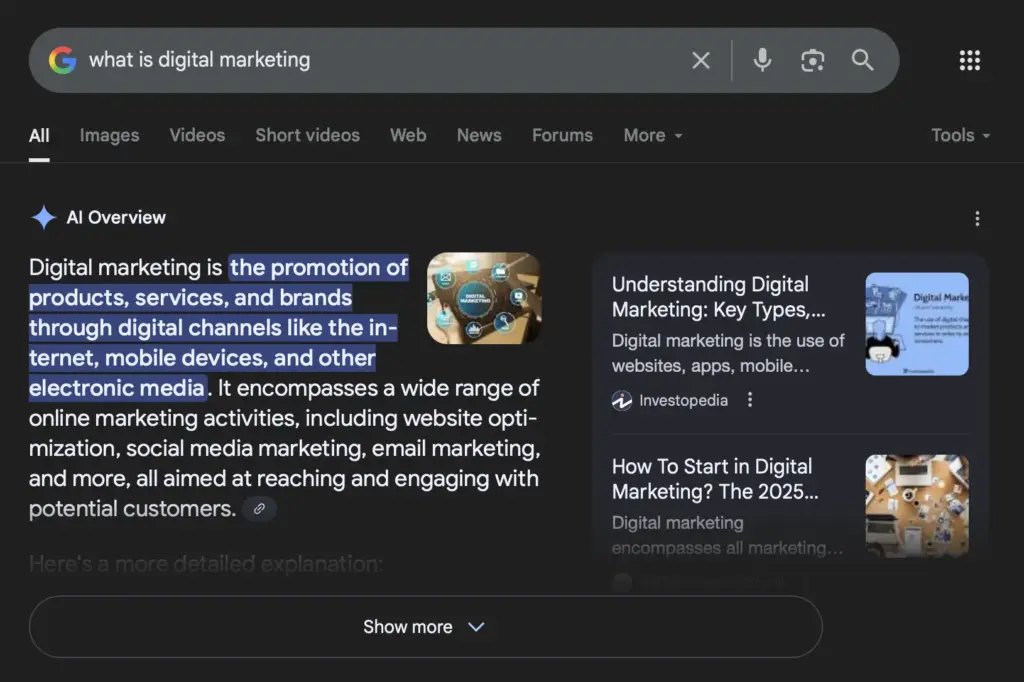
These AI-generated summaries, displayed above traditional search results, provide conversational, source-cited answers, altering the search experience and creating a zero-click environment where users get immediate answers without visiting websites.
Google’s AI Mode, on the other hand, the latest integration in the Google search engine, blends traditional and AI search, allowing users to switch modes, but visibility now hinges on optimizing for AI citations, not just clicks.
Where LLMs Get Their Answers (Hint: It’s Not the Top 5)
According to Semrush, nearly 90% of ChatGPT’s citations come from search results ranked beyond position 20, not the top 5, showing LLMs pull from deeper pages for answers.
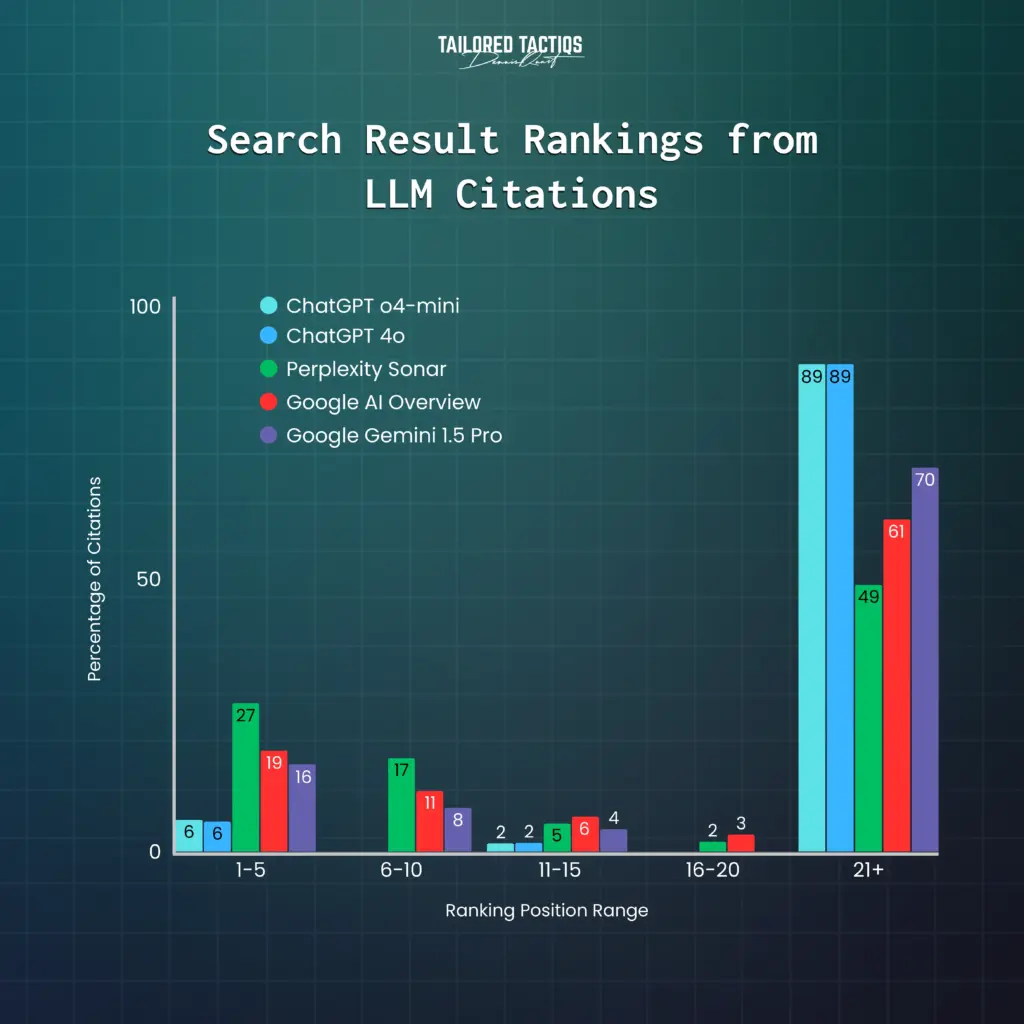
For instance, asking an LLM like ChatGPT, “What are the best SEO blogs in 2025?” might highlight blogs like ours, even if we don’t top Google’s SERPs. Similar patterns appear in other LLMs like Gemini and Perplexity, which favor long-tail sources.
At Tailored Tactiqs, we’ve seen clients increase their LLM visibility by adapting to these new dynamics, and we can help you do the same.
Signs Your LLM Visibility Is Increasing
Your analytics may suggest declining traffic, but your brand influence could be soaring.
For example, one of our clients’ organic search clicks dropped 15% while impressions rose 54% over three months, indicating users see content in AI responses and search directly later.
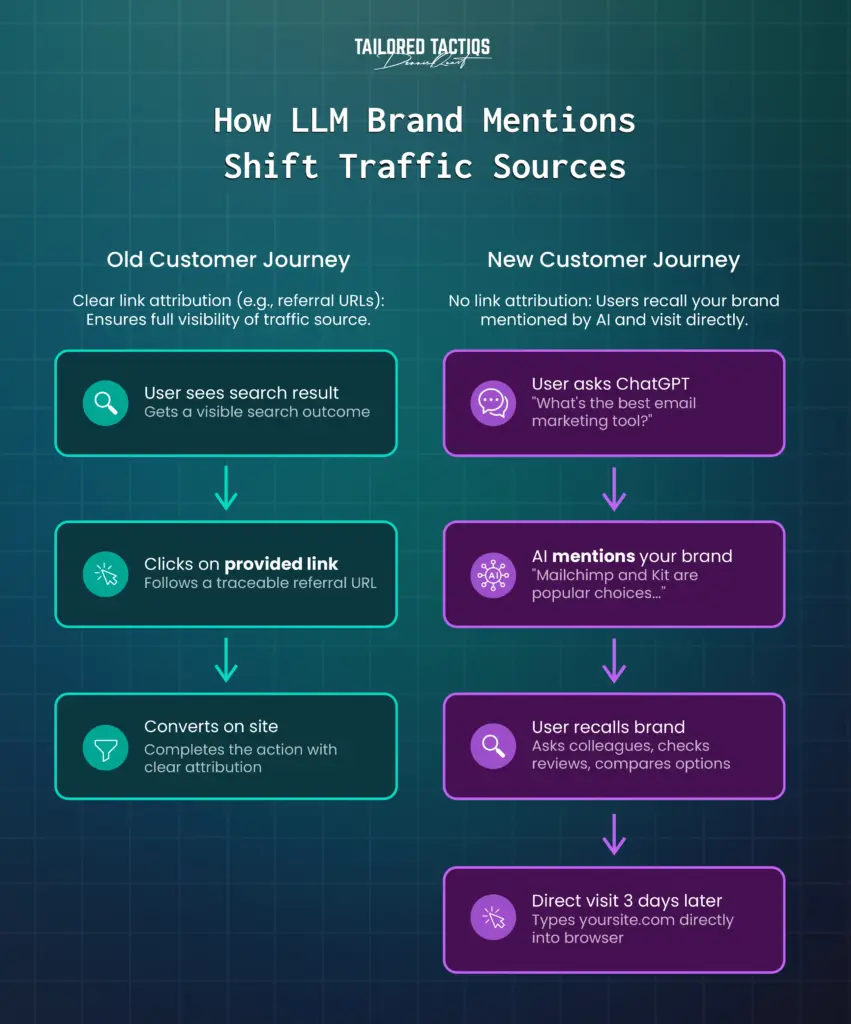
Here are three signs of growing LLM visibility:
- Reduced organic traffic with consistent branded search volume: People are finding your brand through AI interactions and later searching for you directly (showing as direct traffic in Google Analytics).
- Prospects mentioning AI as their discovery source: Customers referencing AI tools during inquiries provide clear evidence of LLM-driven exposure.
- Competitors with weaker traditional SEO outperforming: They’re likely capitalizing on AI-driven visibility, even if their search rankings lag.
The Challenges of LLM Optimization
Optimizing for LLMs isn’t just a tweak to your existing SEO strategy—it’s a fundamental shift. Below, we visualize how LLMs conduct searches.

Here are the key challenges:
- Probabilistic Responses: LLM outputs are contextual and vary based on query phrasing, user intent, or conversation history, so LLM visibility is less predictable than traditional SEO.
- Zero-Click Search: AI often delivers answers without driving traffic to websites, so it’s all about brand mentions over clicks.
- Data Limitations: Some LLMs like Claude rely on static data with a knowledge cut-off date, which limits their ability to provide up-to-date information. But AI search engines with real-time retrieval capabilities can overcome these limitations by providing the most current data and ensuring users get up-to-date information.
- Quality Over Quantity: LLMs prioritize in-depth, trustworthy content over keyword-stuffed pages, in line with Google’s E-E-A-T (Experience, Expertise, Authoritativeness, Trustworthiness) principles. Sourcing information from reputable sources is essential to ensure the trustworthiness and authority of your content.
- Domain Consistency: Strengthening domain consistency across platforms helps establish trust with LLMs so your brand is recognized as a trusted source. Despite the challenges the opportunity is clear: mastering LLM optimization can make your brand a go-to source in AI driven search.
How to Optimize for LLMs: 7 Strategies for Small Businesses
To rank in LLM responses, focus on discoverability, authority, and user-centric content. Gaining LLM visibility is a two-step process: Discovery and Citing.
First, an LLM must be able to find your content through its training data or real-time search queries. Second, your content must be deemed credible, specific, and helpful enough to be used as a source in the generated response.
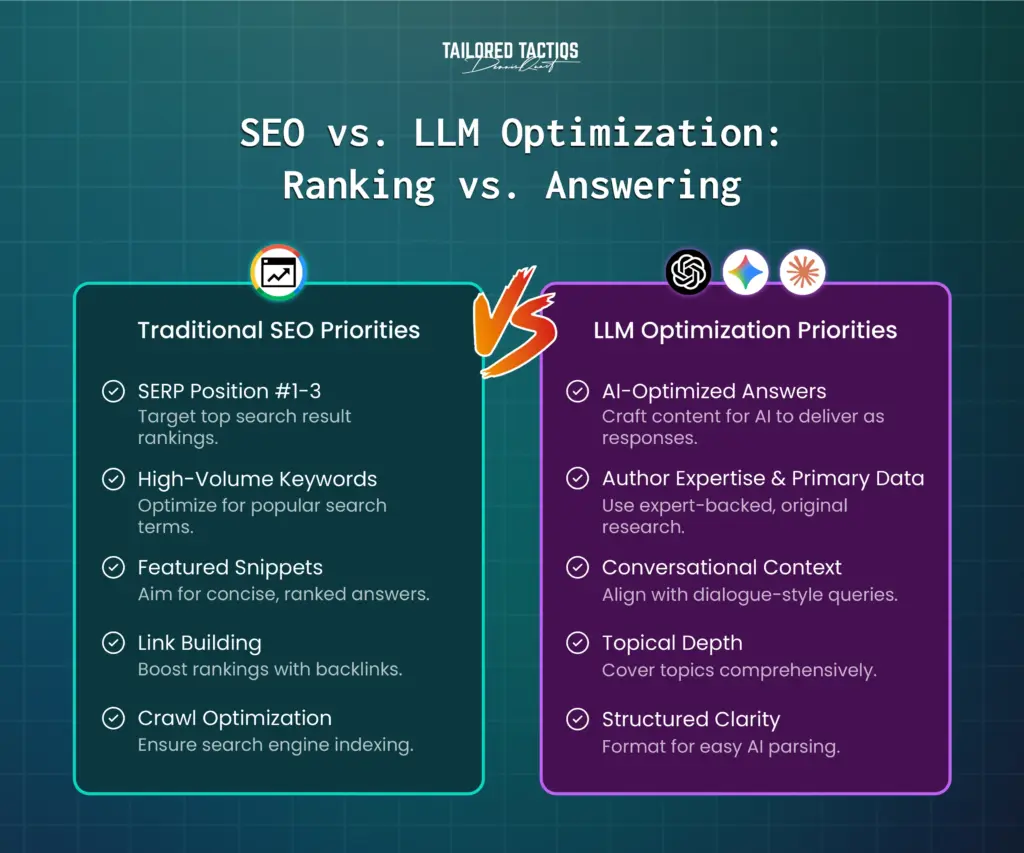
Structuring and guiding your web content for LLM platforms is critical for better performance in generative search and inclusion in AI-generated answers. While traditional keywords are still important, integrating conversational keywords helps your content rank in both classic and AI-driven searching environments.
Ultimately, building brand visibility and driving LLM traffic are the goals of optimizing for large language models and AI search engines with the aim of providing authoritative answers that are included in AI-generated responses.
Drawing from industry research and expert analysis here are seven practical strategies:
1. Build Topical Authority
LLMs love content that demonstrates expertise. Create topic clusters around core topics in your niche.
For example, a digital marketing site could have a hub page on “SEO Strategies” with subpages on on-page SEO, link building, and content optimization.
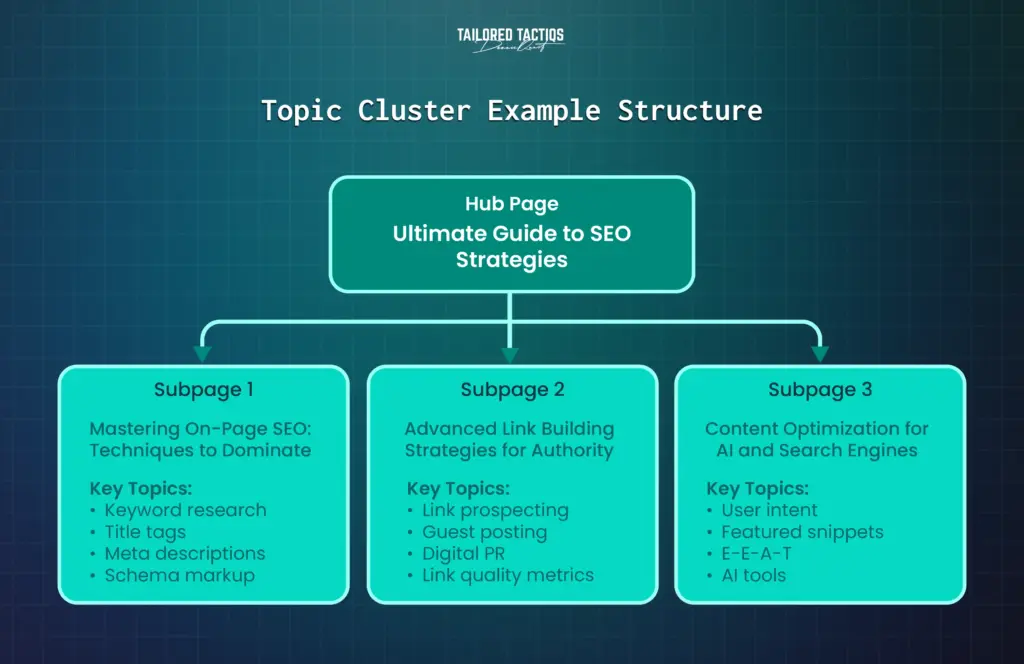
A 2024 study cited by Surfer found that well-organized, comprehensive content increased AI response inclusion by up to 37%.
Within your topic clusters, don’t be afraid to get granular. LLMs excel at finding the single best answer to a very specific question.
For example, a general page on “SEO” is less likely to be cited than a detailed guide on “How to disavow toxic backlinks after a manual penalty in 2025.” The more specific and in-depth your content is, the higher its utility for an LLM looking to answer a precise query.
Action Step: Use Surfer’s Topic Map or Semrush's Keyword Gap Tool to identify content gaps. Create or update 3-5 in-depth guides to establish topical authority.
2. Write Conversational, Question-Focused Content
LLMs love conversational questions like “How do I improve my website’s SEO in 2025?” Write content in natural language, using Q&A formats, clear subheadings, and concise answers.
For example, Tailored Tactiqs’ post on “How to Build a Powerful Brand Identity for Small Business Success” uses subheadings like “What Is a Brand Identity?” to match user intent.
Include FAQs to capture quick, AI-parsable answers. AI chatbots and LLM platforms use this conversational content to generate quick, context-rich answers and enable users to ask follow-up questions for deeper engagement and clarification.
Action Step: Use AnswerThePublic or Google’s “People Also Ask” to find conversational questions.
3. Conduct LLM Seeding
LLM seeding means creating content in formats and locations LLMs will cite, such as FAQ pages, structured lists or tables.
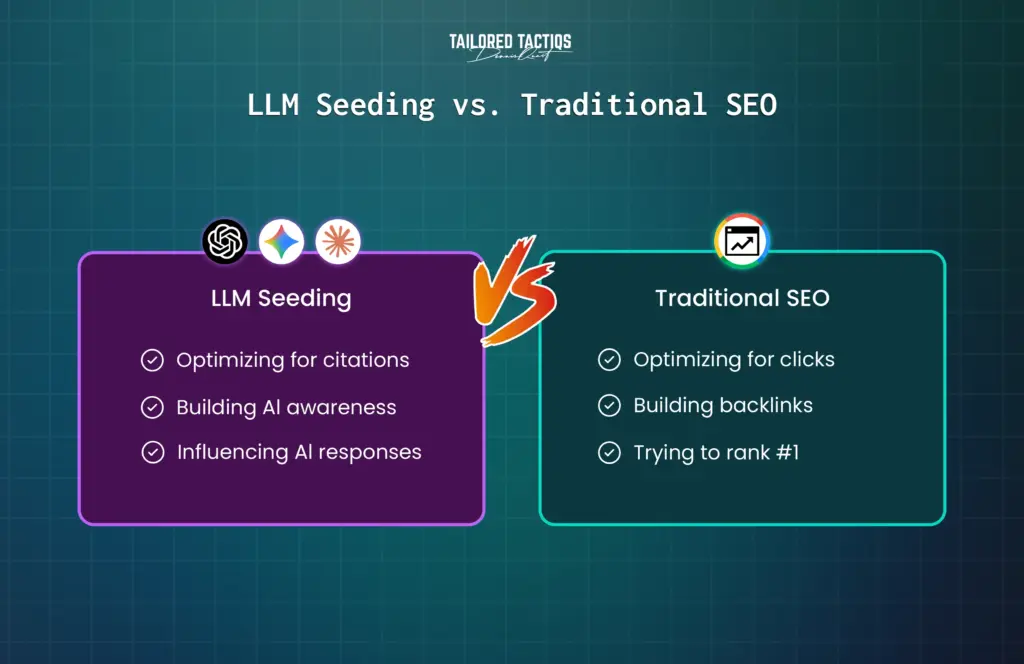
Structured formats like lists and tables exist to make it easier for AI systems to parse and cite content, as more users are searching through AI powered tools rather than traditional search engines.
For example, a post titled “Best SEO Tools for Small Businesses” with bullet-pointed answers and schema markup (e.g., FAQPage or HowTo) is easily parsed by AI.
Surfer’s study of 400,000+ searches showed that structured formats like lists and tables boost AI inclusion rates, further increasing your brand’s LLM visibility with AI-powered search platforms.
Action Step: Create 3-5 FAQ style posts with structured data. Use Schema.org to add relevant markup to your pages.
4. Technical Accessibility
AI crawlers like OpenAI’s GPTBot, Google’s Googlebot, and the newer Google-Extended rely on accessible HTML content. Google-Extended is a specific user-agent that Google uses to gather data to train its generative models, so ensuring it has access is crucial. Make sure your robots.txt file is not blocking these essential bots.
Since AI prioritizes raw HTML, don’t hide critical content in JavaScript, images, or videos. Include descriptive alt text for images and transcripts for videos. A clear site hierarchy with descriptive internal links will also help AI understand your content’s importance.
Action Step: Check your robots.txt file and submit sitemaps to Bing Webmaster Tools and Google Search Console. Use Screaming Frog to ensure content is HTML accessible.
5. Implement AI-Enhanced Schema Markup
Schema helps AI understand your content’s context. Use Organization schema to define your brand’s name, logo, and social profiles, and Article schema for blog posts to highlight publication dates and authors.
Google’s documentation states schema powers AI Overviews and rich results.
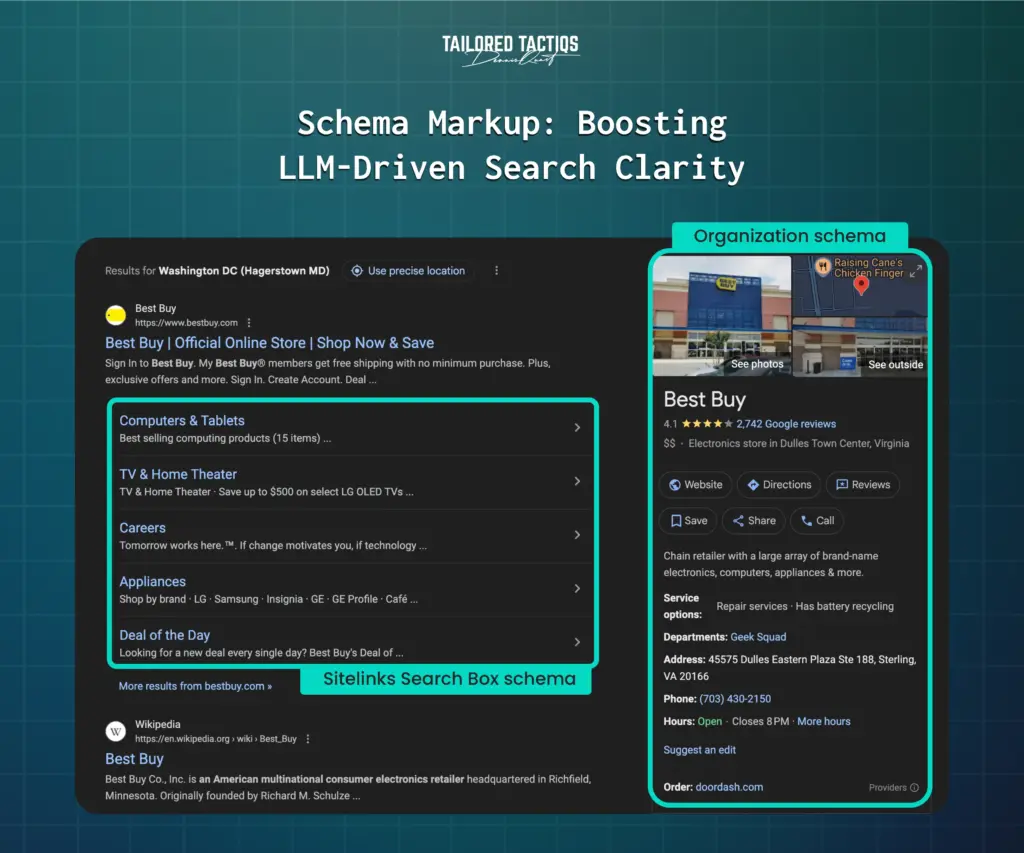
Proper schema helps AI generate direct, authoritative answers from your content by making it easier to interpret and extract relevant information. Not a guarantee but schema increases your chances of being cited.
Action Step: Implement Organization and Article schema using a Schema Markup Generator. Validate with Google’s Rich Results Test.
6. Build Brand Authority and Become a “Known Entity”
LLMs build trust based on your brand’s overall prominence and recognition. Think of it as building a “resume” for your brand on the web. Your goal is to become a “Known Entity” that an LLM has encountered many times in trusted contexts.
To do this, get your brand cited in high-authority sources like Wikipedia, Wikidata, or industry directories (e.g., Google Business Profile, Yelp, CrunchBase).
More resources: In our article "Local SEO Strategies: How to Outrank 99% of Local Businesses on Google," you can get more information on how to outrank your competitors.
Backlinks from respected sites and mentions in “best of” lists (e.g., “Top 10 SEO Blogs of 2025”) are gold for LLM visibility.
Proactively pitch to journalists via HARO or Qwoted for expert quotes, as we’ve done at Tailored Tactiqs to get mentioned in marketing publications.
To amplify your chances of being cited alongside competitors, focus on strategic co-citation. Research shows top-cited businesses appear in “expert clusters” where publications discuss best practices and reference multiple authorities.
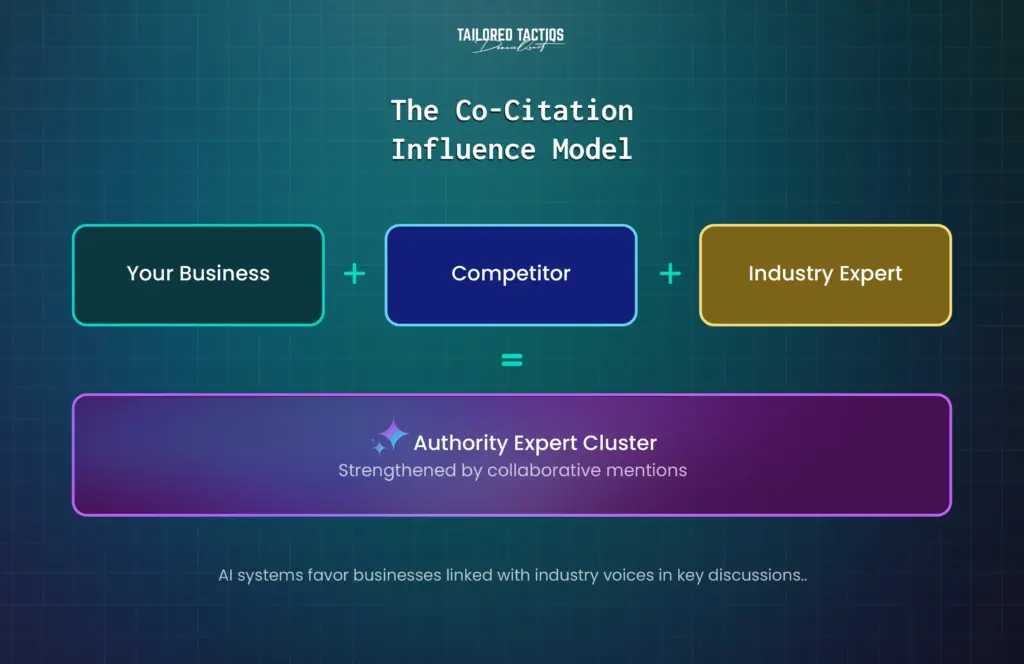
To join these conversations, guest post on publications that cite your competitors, contribute valuable insights to expert roundups, or comment thoughtfully on high-authority industry content.
To further increase authority in AI-generated responses, focus on increasing brand visibility and including original data like unique research, statistics, or case studies in your content.
Action Step: Create a list of 5-10 industry directories or publications for citations and co-citation opportunities. Prioritize platforms where your competitors are already mentioned to maximize your visibility in expert clusters.
7. Engage in Relevant Online Communities
LLMs are trained on vast datasets that include public forums and community platforms like Reddit, Quora, and industry-specific forums.
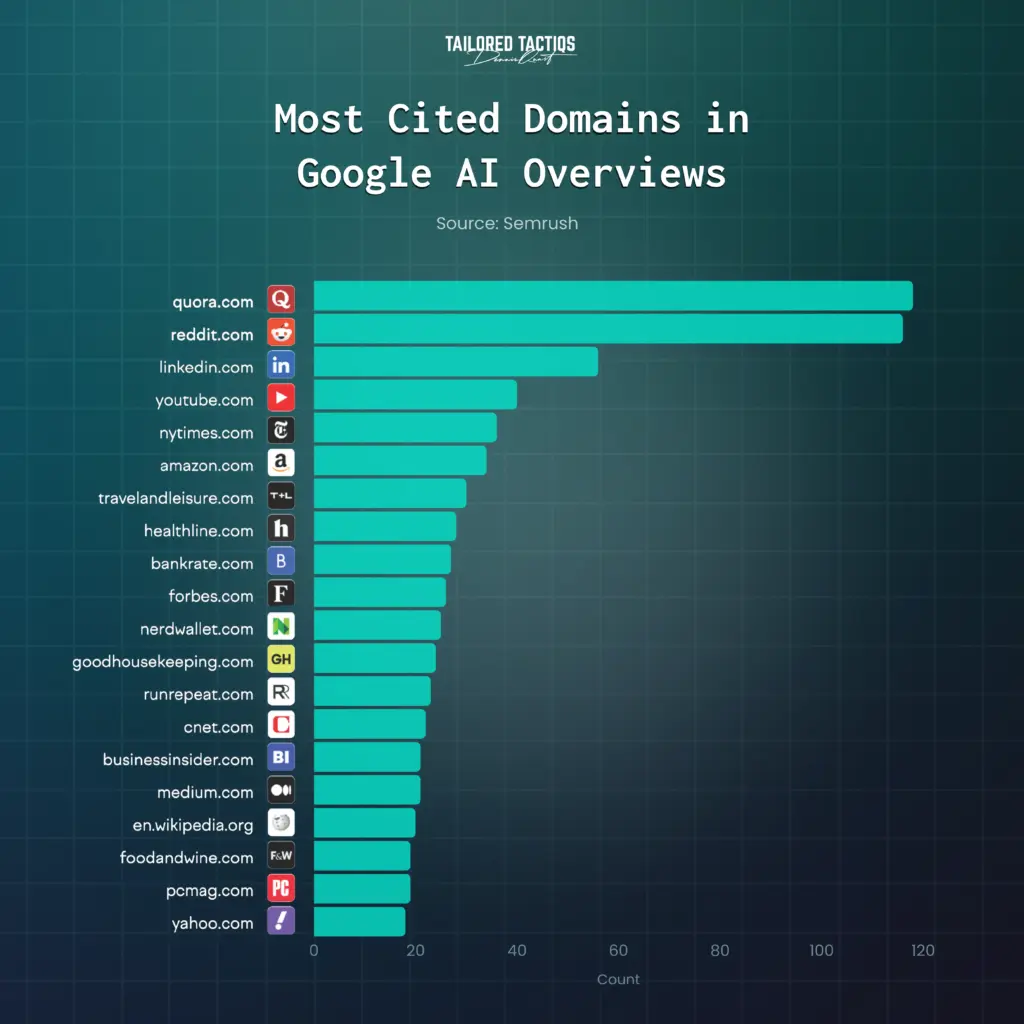
Having your business, products, or experts mentioned positively in these real-world conversations provides powerful social proof and context.
These platforms are where nuanced problems are solved and authentic experiences are shared—signals that are invaluable to an LLM trying to determine expertise (E−E−A−T).
Action Step: Identify the top 3-5 subreddits or online forums where your target audience asks questions. Participate genuinely by offering helpful advice. When appropriate, you can mention your brand or link to a relevant piece of content on your site.
Programmatic SEO: Amplifying LLM Visibility
Programmatic SEO, which involves automating the creation of thousands of targeted pages, complements LLM optimization. For example, Wise’s 8.5 million currency converter pages use templates with unique, user-focused data.
For LLMs, these pages are valuable if they solve specific problems with high-quality content. Start small: a local business could create pages like “Best [Service] in [City]” with unique reviews and data, paired with LLM-friendly formats like FAQs or tables.
Action Step: Identify a programmatic opportunity (e.g., location-based pages). Use a CMS like WordPress with SEOmatic to automate page creation, ensuring each page is unique and valuable.
Measuring LLM Success
Measuring LLM visibility is tough since AI responses don’t drive clicks. Instead, monitor brand mentions in AI outputs using AI Trackers, which analyze mentions across popular LLMs.
Test queries like “Best [Your Niche] Blogs” on ChatGPT or Google’s AI Overviews monthly to see your visibility.
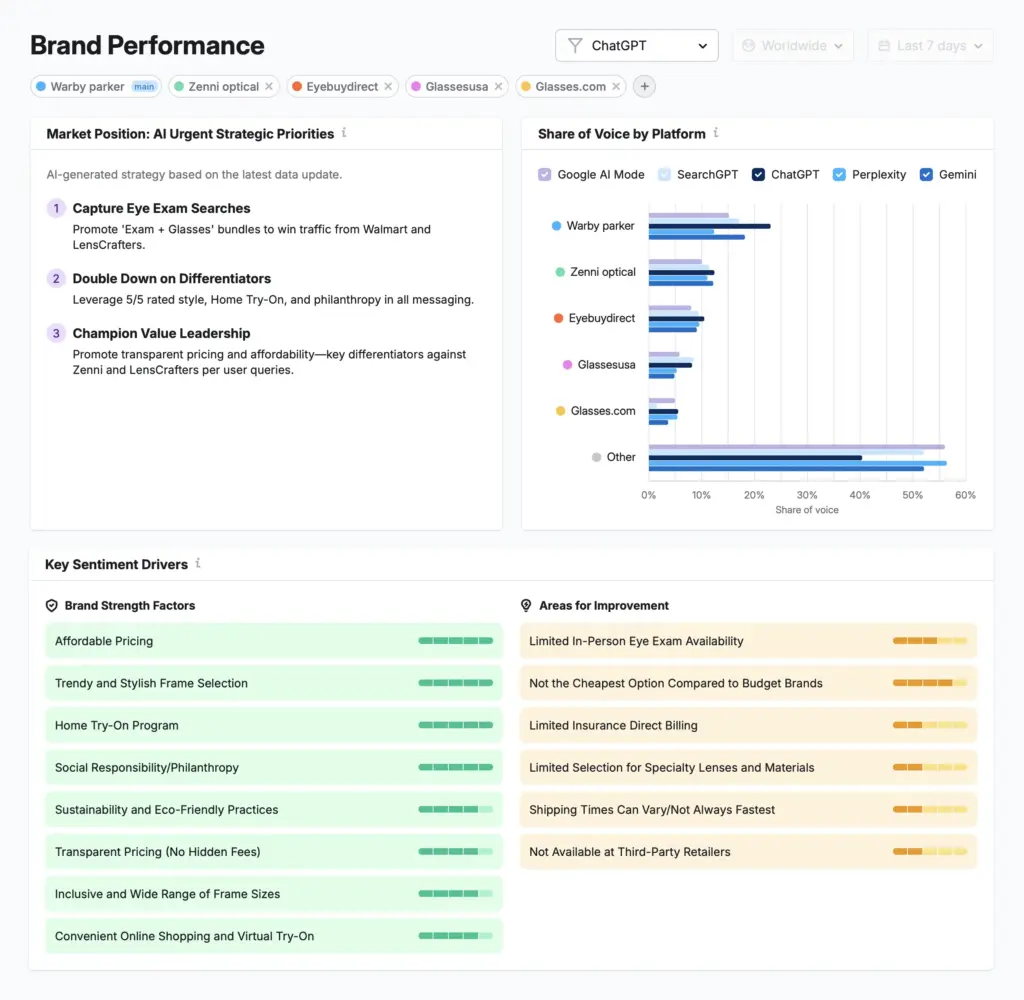
Regularly monitoring content performance in AI search environments is key to adapting and staying relevant. While direct AI mention tracking is essential, don’t neglect traditional SEO metrics.
Since AI Overviews and other RAG systems use real-time search to find information, your content’s ranking on Google is a strong leading indicator of its potential for LLM visibility. If you rank in the top 5 for a key term, you are in the “consideration set” to be cited by the AI.
Therefore, continue to track your keyword rankings, organic traffic, and backlink profile as indirect measures of your LLMO success.
Action Step: Set up an AI tracker, such as Semrush's AI toolkit, or manually test 5-10 industry queries monthly. Adjust content based on citation frequency and sentiment.
Leveling the Field: LLM Optimization Enhances Your SEO Base
LLMs are not replacing traditional SEO but adding a layer on top. As AI search grows, brands that optimize for both traditional and AI search will win.
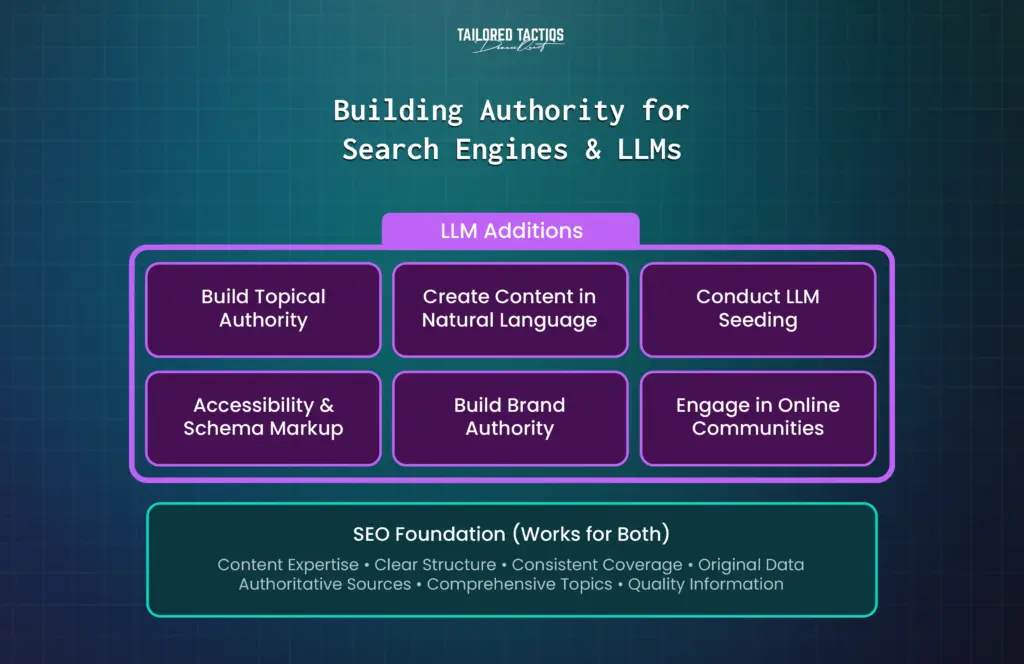
By building topical authority, writing conversational content, LLM seeding, technical accessibility, schema markup, and brand mentions, you can position your website for success.
In short: Optimizing for LLMs is about doubling down on creating genuinely helpful content. The strategies that work for AI are the same ones that have always worked for people: providing clear, satisfying answers, demonstrating first-hand experience, and writing for your audience, not for an algorithm.
LLMs are simply a new, more sophisticated audience that is better at recognizing and rewarding content that is truly helpful.
At Tailored Tactiqs, our Advanced SEO & AI Authority Component is designed to elevate your business’s presence in the age of AI.
We audit your content for relevance and freshness, implement cutting-edge strategies to boost discoverability, and monitor your AI-driven performance.
Ready to boost your LLM visibility? Partner with us today.
